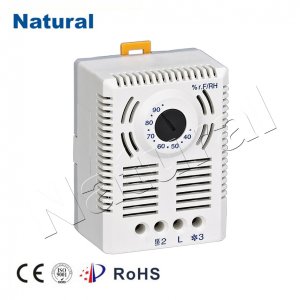Introduction

In the realm of modern technology, fan thermostats have emerged as an innovative and indispensable component for efficient temperature control. These devices have evolved significantly over time, from basic mechanical thermostats to advanced smart thermostats, revolutionizing the way we manage our indoor environments. In this article, we will explore the evolution of fan thermostats, their benefits, and the role they play in enhancing both comfort and energy efficiency. The Early Days: Mechanical Fan Thermostats In the early days of heating and cooling systems, mechanical fan thermostats were the norm. These simple devices operated on a basic principle: when the temperature rose above a set point, the thermostat would trigger the fan to circulate air and maintain a comfortable indoor climate. While effective to some extent, these thermostats lacked precision and required manual adjustments based on changing weather conditions. Enter the Digital Age: Programmable Thermostats The digital age brought about a significant transformation in thermostat technology. Programmable thermostats became popular, allowing users to set specific temperature schedules throughout the day. This innovation helped conserve energy by automatically adjusting the temperature based on occupancy patterns. However, these thermostats still relied on user input and lacked the ability to adapt to real-time changes. Smart Thermostats: A Game-Changer The advent of smart technology marked a major turning point in the evolution of fan thermostats. Smart thermostats, equipped with advanced sensors and connectivity features, brought a new level of convenience and energy efficiency. These devices can learn user preferences over time and make automatic adjustments to create a comfortable environment while optimizing energy usage. One of the standout features of smart thermostats is their remote accessibility. Through smartphone apps or voice assistants, users can control their thermostat settings from virtually anywhere. This capability not only enhances convenience but also enables users to adjust their home’s temperature while away, leading to potential energy savings. Learning and Adaptation What sets smart thermostats apart is their ability to learn and adapt. By monitoring factors such as occupancy, humidity, and ambient temperature, these thermostats can make intelligent decisions to create the ideal indoor climate. Some models even use geofencing technology to detect when occupants are approaching home and adjust the temperature accordingly. Energy Efficiency and Cost Savings The energy-saving potential of smart thermostats cannot be overstated. According to studies, these devices can lead to significant reductions in heating and cooling costs, often paying for themselves in a short period. By optimizing temperature settings and reducing energy wastage, smart thermostats contribute to both environmental sustainability and financial savings. Challenges and Considerations While smart thermostats offer numerous benefits, there are some challenges to consider. Internet connectivity is crucial for remote control and data sharing, which means potential security risks. Additionally, the initial cost of purchasing and installing a smart thermostat can be a deterrent for some individuals, although the long-term savings often outweigh this upfront investment. Conclusion In the ever-evolving landscape of technology, fan thermostats have undergone a remarkable transformation, from basic mechanical devices to intelligent, adaptive systems. Smart thermostats have not only enhanced our comfort but also paved the way for more sustainable and energy-efficient living. As these devices continue to evolve, it’s clear that the marriage of cutting-edge technology and environmental consciousness will shape the future of temperature control in our homes and workplaces.